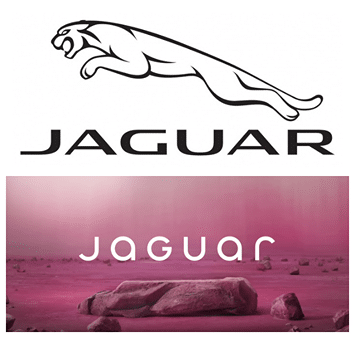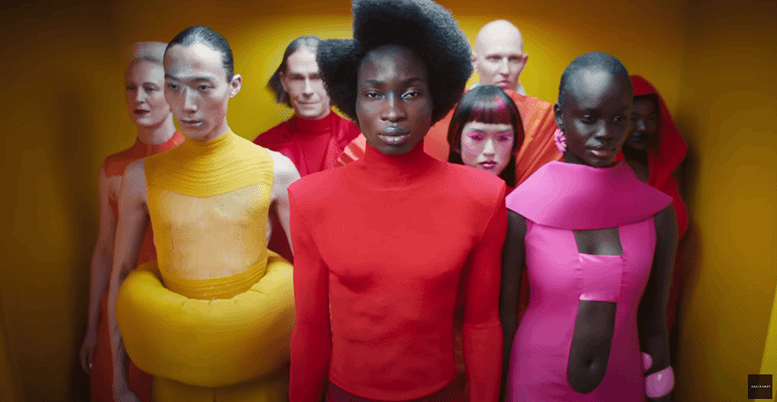Jaguar’s ‘Edgy’ Marketing Rebrand is a Case Study in what NOT to do…
As someone who has always admired Jaguar’s blend of sophistication and performance, their recent rebrand left me puzzled. The iconic British luxury carmaker has decided to shed its traditional skin and adopt a new logo and entirely opposite marketing direction, all part of its pivot towards an all-electric lineup. While I recognise the ambition such a bold rebrand takes, the execution feels like a missed opportunity to honour their legacy while stepping into the future.

What’s In a Logo? A lot, apparently
Central to Jaguar’s rebranding is the introduction of a new logo that departs from the iconic growling jaguar emblem. The updated design does away with the eponymous big cat, and refreshes the typeface with a font that communicates a futuristic vision. This is likely intended to symbolise the brand’s evolution towards modernity and electric vehicles.
Sure, it’s sleek and modern, but it sacrifices the iconic heritage that has defined Jaguar for decades. Logos matter—they’re a brand’s face to the world. They would have had to know that changing such a central element risks alienating long-time fans. Armchair marketing critics agree, with many users taking to X(formerly Twitter) to express their disdain for the new visual identity. Derisive comments can be found all over Jaguar’s page: “umm where are the cars in this ad? Is this for fashion?” or “#Boycottjaguar along with any other business that STILL DOESN’T GET IT”

Marketing Cars Without the… Cars?
Then there’s Jaguar’s online marketing campaign accompanying the rebrand. If you haven’t seen it yet, it’s heavy on diverse models, abstract slogans like “copy nothing,” and artsy visuals—but curiously, light on actual cars (that is to say- there are none) The campaign apparently aims to reposition Jaguar as a forward-thinking and inclusive brand, appealing to a younger crowd.
Let’s be real: car buyers want to see the product. They want to know why your vehicle is better than the competition or at least why they should be interested at all. Instead, Jaguar feels like it’s trying too hard to say, “Look, we’re cool and different!” without showing us how. When I saw the ads, I wondered if they forgot they had an audience. People love Jaguar because of the cars—the sleek designs, the roaring engines, the unmistakable feeling of luxury. Why bury all that behind an abstract marketing concept? However, the absence of actual vehicles in these advertisements has led to confusion and mocking from all corners of the internet. Not a good first step.
Strategy: Leave Legacy Behind?
While the intention behind Jaguar’s rebranding—to align with a future of electric vehicles and attract a younger, more diverse customer base—is perhaps commendable, the execution appears to have missed the mark. Jaguar’s push to rebrand and go all-electric makes sense—future-proofing in the automotive industry is essential. But does that mean you have to leave your history behind? One of the things universally loved about Jaguar is how they blend classic luxury with modern performance. This Jaguar rebrand, however, feels like it’s trying to erase that heritage entirely, purposefully.
When Mercedes-Benz or Porsche releases an electric car, they do it without abandoning the DNA of their brand. They honour their past while stepping into the future. Jaguar could have done the same. Why not use their rebranding to celebrate their rich history while introducing their new direction? That leads me into my next theory: this could all be intentional.

Jaguar Rebrand: Outrage Marketing?
It’s hard to ignore the possibility that the Jaguar marketing campaign could be an example of outrage marketing—a tactic where brands intentionally provoke strong reactions purely to generate buzz. By making bold, intentionally polarising changes (like dropping their iconic logo and focusing on abstract slogans) Jaguar might be banking on the idea that controversy drives conversation.
And let’s face it: it works. Just look at the debates swirling around their rebrand on social media and in the press. Whether people love it or hate it, they’re talking about Jaguar rebranding in a way that gets the brand back into public consciousness. Outrage marketing can be an effective way to break through the noise, especially in an industry as saturated and homogenised as automotive.
But here’s the risk: outrage marketing walks a fine line. For it to succeed, the buzz has to eventually lead to admiration, respect, or at the very least, curiosity. If the backlash overshadows the product, or if it alienates the core audience, the campaign can backfire. Unfortunately, this already seems to be the case. Jaguar may have gained attention, but whether this campaign will translate into loyalty or sales remains to be seen.
Conclusion
With this rebranding, they’ve undoubtedly made a bold move—but bold isn’t always better. The Jaguar car company marketing campaign, while conceptually ambitious, misses the mark in execution. It feels like a step away from what made Jaguar a household name and a step towards something less distinctive.
The overwhelming negative perception suggests that a balance between honouring brand heritage and embracing innovation is crucial towards rebranding a company with an established legacy. Right now, the Jaguar rebrand feels like they’ve hit the gas pedal without fully steering the wheel. Let’s hope their next move finds a better balance, or they might lose more than just a growling cat—they might lose their roar altogether.
At JCKFRUT we take pride in understanding our client’s target market whilst building their marketing strategies. This ensures we design a campaign that resonates with the intended audience, drives results and stimulates business growth. Read more on how we can help your business achieve its goals here.
